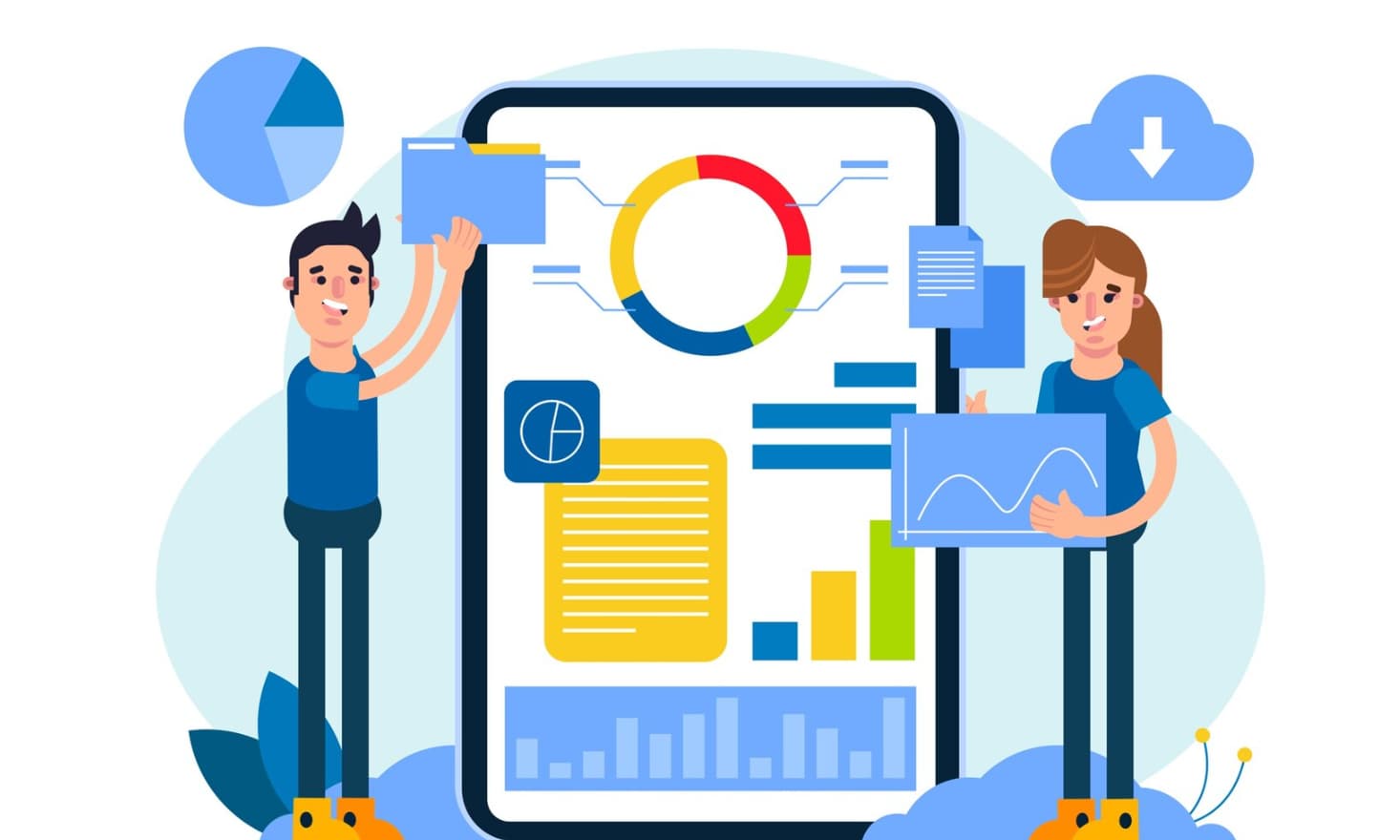Hey there! In today’s tech-driven world, businesses rely heavily on applications to keep things running smoothly.
But what happens when those applications start acting up or not working as well as they should?
That’s where application monitoring comes in.
Why Monitoring Your Application is Important?

In this article, we’ll dive into what application monitoring is, why it’s so important, and the key features to look for in monitoring software.
We’ll keep things simple and easy to understand, so even if you’re not a tech whiz, you’ll be able to follow along. Let’s get started!
What is Application Monitoring?
At its core, application monitoring is all about keeping an eye on how your applications are performing.
It involves tracking different metrics (like response time, CPU usage, memory usage, and network traffic) to make sure everything is running the way it should be.
Application monitoring can be done for all sorts of applications, including:
- Web applications
- Mobile applications
- Desktop applications
It doesn’t matter if the application is hosted on your servers or in the cloud – monitoring is important either way.
Monitoring can be automated using special software tools, or IT teams can do it manually.
The monitoring process usually works like this:
- Collect data from places like application logs, performance counters, and network traffic.
- Analyze the data to spot any patterns or trends that could signal a problem.
- If an issue is found, investigate to figure out what’s causing it.
- Take steps to fix the problem.
There are a few main types of application monitoring:
| Type | What it tracks |
|---|---|
| Performance | Response time, CPU usage, memory usage |
| Availability | Uptime (is the application accessible to users?) |
| Errors | Errors and exceptions happening in the application |
| Security | Potential security vulnerabilities and attacks |
By keeping tabs on applications this way, IT teams can nip problems in the bud before they turn into bigger headaches that disrupt the business.
Plus, monitoring helps optimize application performance and keeps things available and running smoothly for users.
Why Monitoring Your Application is Important?
Imagine you’re counting on an important application to get work done, and all of a sudden it crashes or slows to a crawl.
Frustrating, right? And if it happens often, it could hurt your business. That’s why monitoring is so critical.
Here are some of the key reasons why you need to keep a close eye on your applications:
- Catch problems early: Monitoring helps you spot issues before they blow up into major problems. By looking for red flags and concerning patterns, you can tackle things proactively.
- Keep things running smoothly: Tracking performance metrics like response time and resource usage helps you optimize your applications to run as efficiently as possible.
- Troubleshoot issues quickly: When you’re monitoring in real time, you can jump on problems as soon as they pop up. This helps you resolve things rapidly to minimize downtime and keep business humming along.
- Boost user satisfaction: If your application is fast, reliable, and easy to use, your customers and employees will be much happier. Monitoring helps you deliver a top-notch user experience.
- Maximize resources: By keeping an eye on things like CPU and memory usage, you can make smart decisions about how to allocate resources so you’re not wasting money or capacity.
- Stay compliant: Some industries have strict regulations and standards you need to follow. Monitoring helps you stay on top of compliance requirements.
At the end of the day, application monitoring is all about being proactive rather than reactive. You want to stay ahead of problems instead of scrambling to fix things after the fact. Trust me, your users (and your stress levels!) will thank you.
The Purposes of Application Monitoring
We’ve talked about why application monitoring matters – now let’s look at some of the specific goals and purposes it serves.
Early Issue Detection:
One of the biggest benefits of monitoring is that it helps you catch problems super early. And the sooner you spot a problem, the easier it is to fix! It’s like getting a warning light on your car dashboard – if you address it right away, you can prevent a full-on breakdown.
Detecting issues ASAP is essential for minimizing downtime and keeping things running smoothly for users. Even a short disruption can be a big deal. According to Gartner, the average cost of IT downtime is $5,600 per minute. Yikes!
Performance Optimization:
Applications don’t always perform at their best right out of the box. Monitoring helps you spot sluggish response times, bottlenecks, and other things slowing the application down.
Think of your application like a car engine. If something isn’t quite right under the hood, the car might still run, but nowhere near as well as it could. By “looking under the hood” of your application with monitoring tools and tracking key performance indicators (KPIs), you can figure out how to fine-tune things so everything runs like a well-oiled machine.
Some common application performance KPIs include:
- Response time
- Error rate
- Request rate
- CPU usage
- Memory usage
User Experience Enhancement
User experience (UX) can make or break an application. If things are confusing, slow, or buggy, users will get frustrated and look for alternatives. Application monitoring is all about making sure that doesn’t happen.
By keeping a pulse on performance, availability, and errors, you can provide a smooth, intuitive, and reliable experience that keeps users coming back. Some key UX metrics to track include:
- App load time
- User satisfaction score
- User churn rate
- Session duration
- Interactions per session
Security Threat Identification
Applications can be vulnerable to all kinds of security threats like malware, hacking attempts, and data breaches. Application monitoring helps you spot suspicious activity and take action before sensitive data falls into the wrong hands.
Some red flags to watch for:
- Unusual login attempts
- Unexpected spikes in traffic
- Unfamiliar IP addresses
- Abnormal resource usage
If a security incident does occur, monitoring tools provide valuable forensic data to help you investigate what happened and how to prevent similar issues in the future.
Compliance and Regulation
Depending on your industry and location, there may be all sorts of regulations and standards you need to comply with – things like GDPR, HIPAA, PCI DSS, and more. Compliance requirements often include strict rules around how you handle, store, and protect data.
Application monitoring helps you stay on the right side of these regulations by:
- Ensuring data is being handled properly.
- Alerting you to any compliance issues or violations.
- Providing audit trails and reports to demonstrate compliance.
Failing to meet compliance standards can lead to hefty fines, legal troubles, and reputation damage. It’s not worth the risk! Application monitoring helps you stay on top of the rules and requirements.
Capacity Planning
As your application scales and your user base grows, it’s important to plan so you have enough resources and infrastructure in place to keep up with demand. This is where capacity planning comes into play.
Capacity planning involves using application performance and usage data to:
- Predict the resources you’ll need in the future.
- Anticipate potential bottlenecks before they occur.
- Determine when to invest in things like extra servers, storage, etc.
Some key metrics for capacity planning include request rate, network throughput, storage performance, and query times. By keeping an eye on these metrics over time, you can spot trends and patterns that help you plan for growth.
Overall, application monitoring serves a ton of important purposes. From improving performance to enhancing UX to identifying threats, it’s an essential tool for keeping your application in tip-top shape.
Features of Application Monitoring Software
Now that we’ve covered the why of application monitoring, let’s talk about the how. Specifically, what should you look for in application monitoring software? Here are some key features to keep an eye out for:
- Real-Time Monitoring: You don’t want to find out about application issues after the fact. Real-time monitoring means you can see how things are performing at any given moment, as it’s happening. This allows you to be proactive and catch issues immediately instead of waiting for users to start complaining.
- Customizable Alerts: Every application and business is different, so a one-size-fits-all approach to alerts and notifications won’t cut it. Look for monitoring software that lets you set your own thresholds and parameters for when you want to be notified about certain events or issues.
- Intuitive Dashboards: Application monitoring tools capture a ton of data, but all that information is useless if you can’t make sense of it. That’s where dashboards come in. A good monitoring dashboard should give you a clear, at-a-glance view of key metrics and performance indicators. Look for dashboards that are visually appealing, easy to navigate, and customizable.
- Root Cause Analysis: When something goes wrong with your application, you need to know why so you can fix it. Root cause analysis capabilities help you dig deep into issues to pinpoint the underlying cause. This might involve analyzing log files, tracing transactions, or using AI and machine learning to surface insights.
- Scalability: As your application grows and evolves, your monitoring solution needs to be able to keep up. Cloud-based and containerized applications in particular can be tricky to monitor because they’re so dynamic and distributed. Look for monitoring software that can automatically scale up or down based on your application’s needs.
- Integration and Extensibility: No application exists in a vacuum. Chances are, you’re using all sorts of different tools and technologies to build, deploy, and manage your application. Your monitoring software should play nicely with these other tools and platforms. Look for pre-built integrations with things like your cloud provider, container orchestration tool, incident management software, etc. Bonus points if the monitoring software has a flexible API that allows for custom integrations.
- Intelligent Insights: With the rise of artificial intelligence and machine learning, monitoring software is getting smarter and smarter. Some tools can automatically detect anomalies, predict future issues, and even suggest remediation steps. While AI can’t replace human expertise entirely, it can certainly help you work smarter and more efficiently.
- Detailed Reporting: In addition to real-time monitoring, it’s important to be able to look back at historical data and trends over time. Detailed reporting capabilities allow you to see how your application has performed in the past and identify areas for improvement. Look for tools that offer both pre-built and customizable reports that you can easily share with stakeholders.
When evaluating application monitoring software, think about which features are most important for your specific use case. Don’t just go for the flashiest or most feature-rich tool – focus on the capabilities that will move the needle for your business.
FAQs:
Do you have questions about application monitoring? We’ve got answers! Here are some common questions and concerns that come up when folks are exploring monitoring solutions.
- Q: What’s the difference between application monitoring and infrastructure monitoring?
A: Infrastructure monitoring focuses on the underlying hardware and resources that support your application, like servers, databases, and networks. Application monitoring, on the other hand, focuses specifically on the performance and behavior of the application itself. While there is certainly overlap between the two, application monitoring goes a level deeper to focus on things like user experience, transactions, and business metrics.
- Q: Do I need to monitor all my applications?
A: In an ideal world, yes! But realistically, you may need to prioritize based on factors like criticality, complexity, and usage. Start with your most important, high-traffic applications and work your way down the list. Be sure to also consider any applications that are subject to strict compliance or regulatory requirements.
- Q: Can I monitor applications that are hosted in the cloud?
A: Absolutely! Cloud-based applications are often even more important to monitor because you have less direct control over the underlying infrastructure. Many application monitoring tools are designed with cloud compatibility in mind and can integrate with popular cloud platforms like AWS, Azure, and Google Cloud.
- Q: How much does application monitoring cost?
A: Pricing for application monitoring software can vary widely depending on factors like the size and complexity of your environment, the specific features you need, and whether you opt for a cloud-based or on-premises solution. Some tools charge based on the number of metrics or hosts being monitored, while others use a subscription-based model. Be sure to get a detailed quote and compare pricing across multiple vendors before making a decision.
- Q: Do I need a dedicated team to handle application monitoring?
A: It depends on the size and complexity of your organization. Smaller teams may be able to manage monitoring alongside their other duties, while larger enterprises may benefit from a dedicated monitoring team or center of excellence. Regardless of your team structure, it’s important to have clear roles and responsibilities around monitoring and to ensure that everyone is trained on how to use the tools effectively.
- Q: How do I get started with application monitoring?
A: Start by defining your goals and requirements for monitoring. What are the most important metrics and KPIs you need to track? What are your biggest pain points or challenges with your current application stack? Use these insights to guide your search for the right monitoring solution. Many vendors offer free trials or proof-of-concept projects so you can test out the tool before making a full commitment.
Also Check:
Conclusion:
We covered a lot of ground in this article, but hopefully, you’re coming away with a clearer understanding of what application monitoring is and why it’s so crucial for modern businesses. To recap, some of the key benefits of application monitoring include:
- Identifying and resolving issues before they impact users.
- Optimizing application performance and efficiency.
- Enhancing user experience and satisfaction.
- Ensuring security and compliance.
- Planning for future growth and capacity needs.
When it comes to choosing an application monitoring tool, there are a lot of options out there. Look for a solution that offers real-time monitoring, customizable alerts, intuitive dashboards, intelligent insights, and robust integration capabilities. Don’t be afraid to test out a few different options before making a decision.
Application monitoring may seem complex and overwhelming at first, but it doesn’t have to be. By starting small, defining clear goals and KPIs, and choosing the right tools for your needs, you can build a monitoring practice that helps your business thrive.
So what are you waiting for? Go forth and monitor! Your users (and your bottom line) will thank you.






